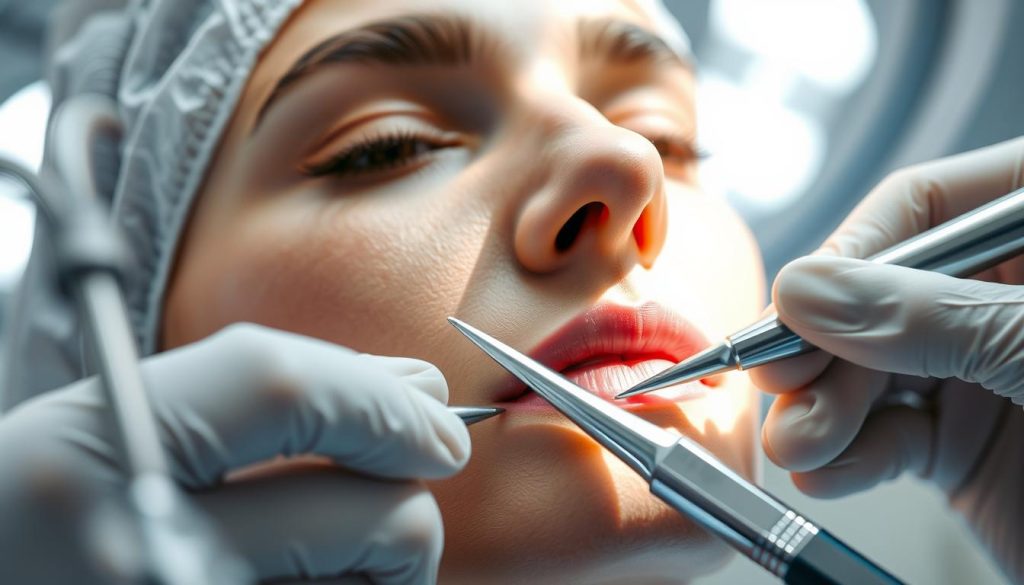Plastic surgery is a diverse medical specialty that encompasses a wide range of surgical procedures aimed at repairing, reconstructing, or replacing physical defects that affect both form and function across multiple body areas.
This field includes both reconstructive procedures that address medical issues and cosmetic surgeries that enhance appearance for aesthetic reasons. Plastic surgeons undergo extensive specialized training to develop expertise in complex surgical techniques.
The specialty requires a unique combination of surgical precision, artistic vision, and anatomical knowledge to achieve optimal functional and aesthetic outcomes. Patients seek plastic surgery for various reasons, including birth defects, traumatic injuries, and aesthetic enhancement.
Key Takeaways
- Plastic surgery is a broad surgical subspecialty that treats various pathologies.
- It encompasses both reconstructive and cosmetic surgical procedures.
- Plastic surgeons work alongside other medical specialties to restore form and function.
- The field requires a combination of surgical precision and artistic vision.
- Patients seek plastic surgery for a range of reasons, from medical issues to aesthetic enhancement.
Understanding Plastic Surgery: Definition and Scope
Understanding plastic surgery requires a look into its definition, history, and the professionals who perform it. Plastic surgery is a medical specialty that involves the reconstruction, repair, or alteration of the human body.
What Is Plastic Surgery?
Plastic surgery encompasses a wide range of surgical procedures aimed at restoring form and function to various parts of the body. It includes both reconstructive surgery, which addresses defects or injuries, and cosmetic surgery, which is elective and aimed at enhancing appearance. Plastic surgeons are highly trained professionals who complete extensive education and training, including medical school, surgical residency, and often specialized fellowship training.
| Aspect | Description |
|---|---|
| Reconstructive Surgery | Addresses defects or injuries, aiming to restore normal function and appearance. |
| Cosmetic Surgery | Elective procedures aimed at enhancing appearance. |
| Training | Plastic surgeons undergo extensive training, including medical school and surgical residency. |
The History and Evolution of Plastic Surgery
The history of plastic surgery dates back to ancient civilizations, with evidence of reconstructive procedures found in records from India, Greece, and Rome. Over the centuries, plastic surgery has evolved significantly, driven by advances in medical technology and techniques. Modern plastic surgery now encompasses a broad range of procedures, from orthognathic surgery and free tissue transfer to cosmetic enhancements.

Who Performs Plastic Surgery?
Plastic surgery is performed by highly trained plastic surgeons who have completed rigorous education and training. Board-certified plastic surgeons in the United States typically complete at least 6-8 years of specialized training after medical school and must pass rigorous examinations. Many plastic surgeons choose to subspecialize in areas such as craniofacial surgery, hand surgery, or aesthetic surgery, developing expertise in complex surgical techniques.
The training models for plastic surgeons include both integrated programs and independent programs, ensuring that they are equipped with the necessary skills and knowledge to perform a wide range of procedures, from reconstructive surgeries for trauma and congenital conditions to cosmetic enhancements.
Types of Plastic Surgery: Reconstructive vs. Cosmetic
Plastic surgery is a diverse field that encompasses both reconstructive and cosmetic procedures. Reconstructive surgery focuses on repairing defects or injuries to restore function and appearance, while cosmetic surgery aims to enhance appearance for non-medical reasons.
The scope of plastic surgery is broad, with surgeons performing procedures on various parts of the body, including the face, neck, breasts, stomach, arms, and legs. Reconstructive plastic surgery addresses structural defects caused by birth disorders, developmental abnormalities, trauma, infection, tumors, or disease. Common reconstructive procedures include cleft lip and palate repair, breast reconstruction following mastectomy, hand surgery, treatment of severe burns, and reconstruction after trauma or cancer removal.
Cosmetic or aesthetic plastic surgery, on the other hand, is performed on normal structures to improve aesthetic appeal rather than for medical necessity. Popular cosmetic procedures include rhinoplasty (nose reshaping), blepharoplasty (eyelid surgery), rhytidectomy (facelift), breast augmentation or reduction, abdominoplasty (tummy tuck), and liposuction. Many plastic surgeons perform both reconstructive and cosmetic procedures, applying similar techniques and aesthetic principles across both domains.
The boundaries between reconstructive and cosmetic surgery can sometimes blur, as procedures may serve both functional and aesthetic purposes simultaneously. Specialized areas within plastic surgery include craniofacial surgery, microsurgery, hand surgery, and burn care. Plastic surgeons often perform procedures like free tissue transfer, where tissue from one body area is moved to another with its blood supply intact through microsurgical techniques.
The field of plastic surgery continues to evolve with advances in technology, materials, and techniques, expanding treatment possibilities for both reconstructive and cosmetic applications. As a result, plastic surgeons are able to provide comprehensive care for a wide range of conditions, from congenital defects to traumatic injuries and aesthetic concerns.
FAQ
What is the difference between reconstructive and cosmetic surgery?
Reconstructive surgery aims to restore form and function to damaged or defective tissues, often due to trauma, congenital conditions, or disease. Cosmetic surgery, on the other hand, is elective and focuses on enhancing appearance.
What is cleft lip and palate repair?
Cleft lip and palate repair is a type of reconstructive surgery that corrects a congenital condition where the lip and/or palate do not form properly. The goal is to improve appearance, speech, and overall oral function.
What is breast reconstruction?
Breast reconstruction is a surgical procedure that rebuilds the breast after mastectomy or trauma. It can involve implants, tissue transfer, or a combination of both, aiming to restore a natural appearance.
What is orthognathic surgery?
Orthognathic surgery corrects abnormalities in the jaw and face, improving alignment, function, and aesthetics. It is often performed to address issues such as underbites, overbites, or facial asymmetry.
What is free tissue transfer?
Free tissue transfer is a surgical technique that involves transferring tissue from one part of the body to another, along with the blood vessels that supply it. This is often used in reconstructive surgery to repair complex defects.
What areas of the body can be treated with reconstructive surgery?
Reconstructive surgery can be applied to various areas, including the face, head, neck, breast, upper extremity, and hand, to repair defects or damage caused by trauma, disease, or congenital conditions.
How is hand and upper extremity surgery performed?
Hand and upper extremity surgery involves a range of procedures to repair or restore function to the hand, wrist, and arm. This can include treatments for conditions such as nerve damage, tendon injuries, or congenital deformities.
